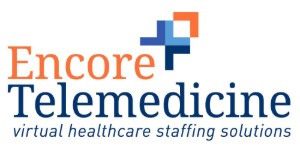Up to the present time, the terms telemedicine and telehealth have often been used on an interchangeable basis, but it has become clear that different meanings are becoming associated with the two more and more. Strictly speaking, telemedicine refers to making use of technology within the medical field, whereas telehealth is more often used to embody the consumer-facing approach to medical care, which incorporates both the education of patients and the delivery of care to them.
In the past, the term telemedicine was far more prevalent, but currently usage of telehealth is becoming much more popular, simply because it involves a much broader range of applications within medicine. Indeed, telehealth has come to include a complete cross-section of almost all individual medical fields such as traditional health service, counseling, physical therapy, home health, dentistry, and even the recommendation of treatment programs.
View of the American Telemedicine Association
Weighing in on the question of any difference between telemedicine and telehealth, the American Telemedicine Association considers the two to be pretty much the same. Its own definition of telemedicine is the following, “Formally defined, telemedicine is the use of medical information exchanged from one site to another via electronic communications, to improve a patient’s clinical health status. Telemedicine includes a growing variety of applications and services using two-way video, email, smartphones, wireless tools, and other forms of telecommunications technology.”
The organization goes on to say that while telehealth is often used in common language to refer to a broader concept of healthcare provided remotely, it still considers the two terms to be basically in reference to the same collection of healthcare services, and delivered via the same kinds of technology.
View of the Department of Health and Human Services
This organization does see a difference between the two terms, and it seeks to clarify the difference between them in this way: “Telehealth is different from telemedicine because it refers to a broader scope of remote Healthcare Services than telemedicine. While telemedicine refers specifically to remote clinical services, telehealth can refer to remote non-clinical services such as provider training, administrative meetings, and continuing medical education, in addition to clinical services.”
Other agencies and governmental bodies have weighed in on the same question, with the Center for Connected Health Policy offering their views in this way: telehealth refers to the broadest range of medical management and diagnosis, patient education, and additional healthcare fields which are related, whereas telemedicine merely includes traditional clinical diagnosis, along with monitoring capabilities that are made possible via technological means.
Differing views
Among professionals or organizations which do consider the terms to be somewhat different, the prevailing opinion seems to be that telehealth encompasses a much broader collection of health services than does telemedicine. Telehealth is also a much more current version of telemedicine, having come into vogue only within the last couple years. In the view of those organizations and professionals which consider telehealth to be a broader area, it is made broader by including several categories of healthcare services such as remote patient monitoring, live video consultations, mHealth, and store-and-forward care.
The truth is, an examination of the use of both terms by federal agencies alone will make it apparent that there are something like 10 different definitions of telehealth and telemedicine which are officially espoused by those organizations. One of the clearest and most interesting definitions offered comes from Roger Downey, who is a Communications Manager for GlobalMed, and his assessment of the two terms coincides with that of a great many health professionals these days.
Mr. Downey describes telemedicine as a process where ideally a patient is being teleconferenced with a qualified physician, but is attended at the remote point by a ‘patient presenter’. This patient presenter is equipped with either an exam camera or a stethoscope, and possibly other medical equipment as well, for the purpose of using those medical devices to gather and relay data to the doctor’s office. In other words, Mr. Downey considers that telemedicine sessions are much more specific, and accomplish more specific outcomes and results than do the broad services referenced by telehealth.
While the debate is likely to go on for a while yet, a couple things have become clear about the usage of telemedicine and telehealth in the common vernacular. Firstly, telehealth is slowly supplanting telemedicine as the more dominant expression, and where the two are still used together, telemedicine is generally used more frequently to refer to specific live consultations between doctor and patient, as opposed to the collection of generalized services available within the telehealth field.

